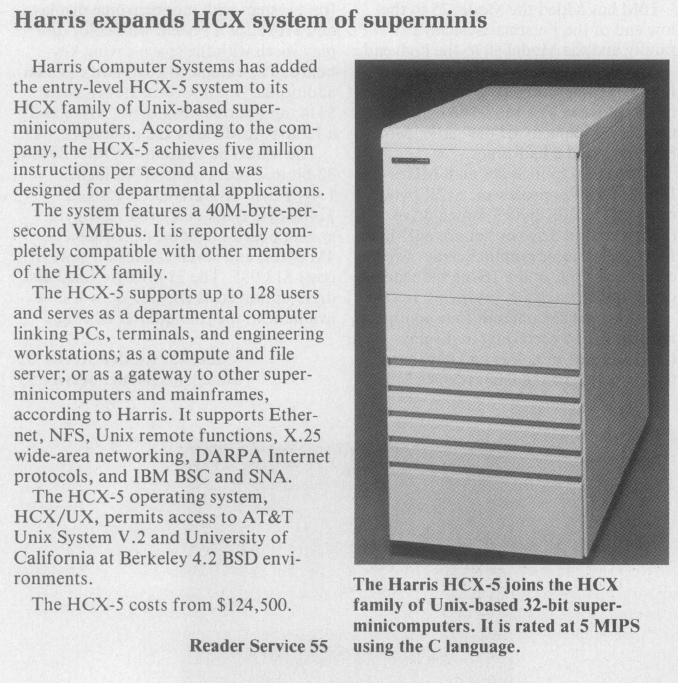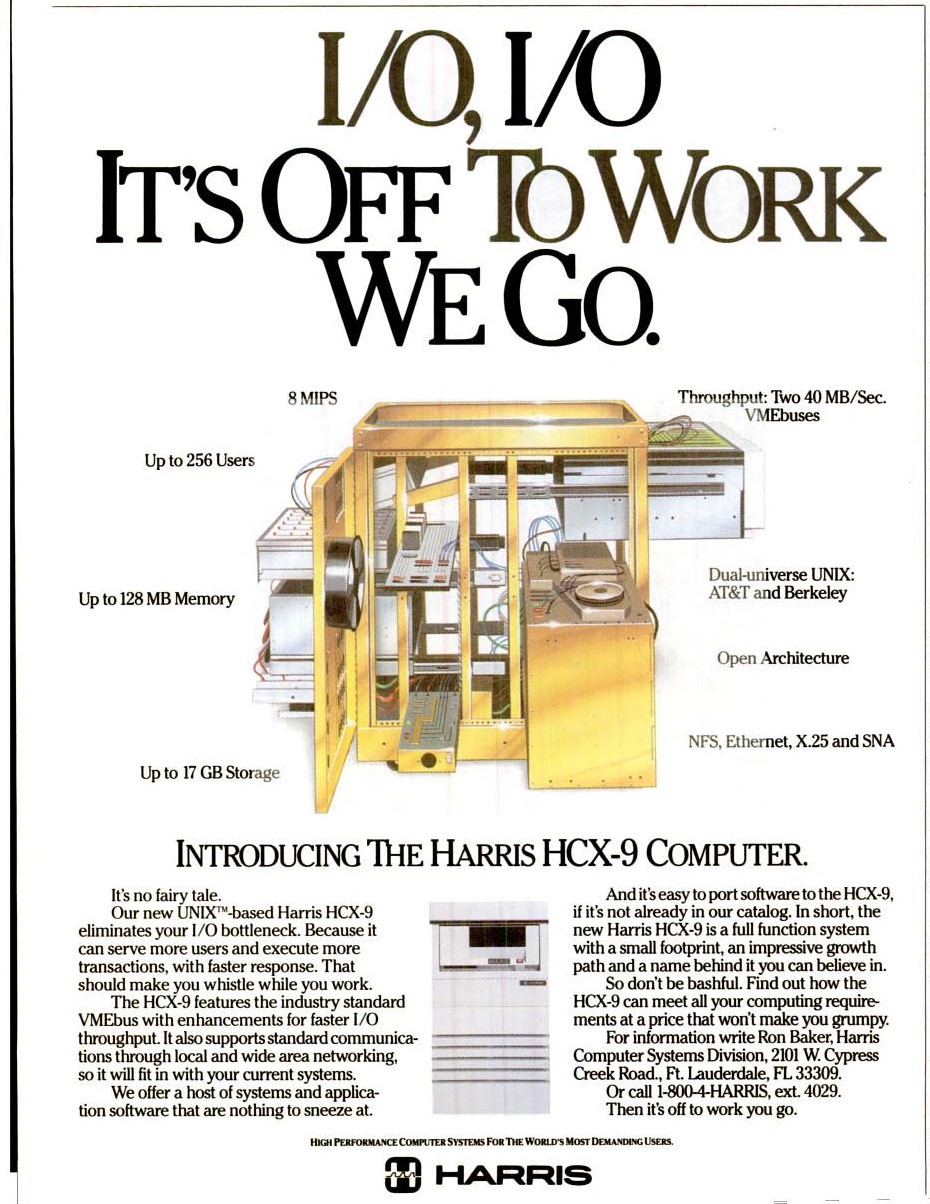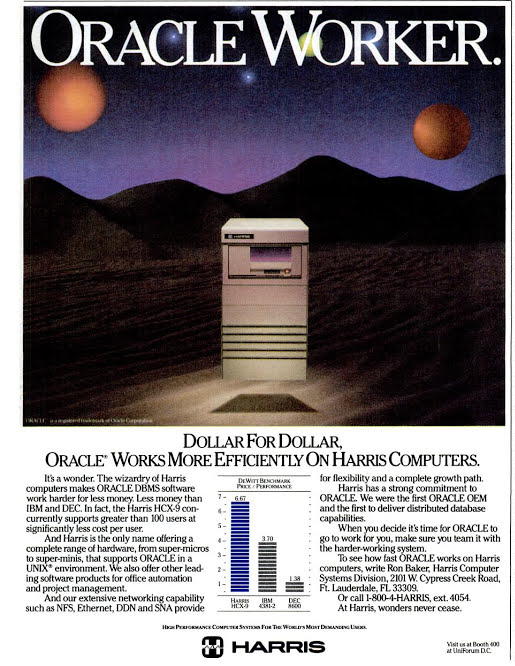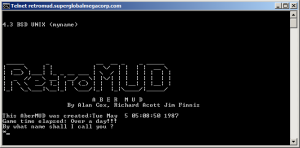A machine born in legend
This is a machine that is shroud in legend, and of course played an integral part of internet history but oddly enough almost all trace of it ever existing has vanished.
The release of BSD, aptly named the 4.3BSD TAHOE release was completed in June of 1988. However shortly after this release the makers of the CPU, Computer Consoles Incorporated abruptly exited the market killing off the platform. Â What is interesting though is that while CCI was manufacturing the TAHOE processor, they also sold it to 3 other OEM’s, Sperry (which merged with Buroughs, and re-branded as Unisys), and ICL Ltd. and Harris is the only other one to have picked up the CPU for inclusion in it’s own machines. Â Among them was the HCX-7, and the HCX-9.
The Harris HCX minicomputers were one of the possible machines that the CSRG team at Berkeley saw as a possible successor to the aging VAX line of minicomputers for their operating system.  While this may not have been the first port of UNIX or BSD for that matter, it was the first port of a 32bit BSD, that was included into the main VAX BSD source, and as such could be redistributed with the BSD license (which at the time required an AT&T 32V license).  The fundamental thing this did was to split out the VAX specific code as a mainstream port was to be rolled back into the main CSRG source, unlike any other 3rd party port at this point.
The HCX-5 ran an internal version of 4.2BSD, along with SYSV in a ‘dual universe’ config, while the HCX-9 was to be supported by the CSRG, as the file GENERIC.hcx9 indicates from 4.3BSD TAHOE. Â As you can see the HCX-5’s starting price of $124,500 USD is if anything a continuing of the mindset that BSD only ran on super expensive minicomputers.
POWER 6/32 = HCX-9
Indeed from the config file in 4.3BSD TAHOE, we see this:
GENERIC POWER 6/32 (HCX9)
And for quite some time, I’ve always been searching for a CCI POWER 6/32, meanwhile it appears that was merely a reference platform that became the HCX-9 as indicated from the machine config file. Â The evidence was hiding in plain sight, as always it was a typo that lead me here as I was searching for TAHOE processors, and came across people looking for GCC on the TAHOE, running BSD. Â And following their threads I noticed that they were running Harris minis’ which then lead me to make the connection that the TAHOE was a processor, not just a machine, and that other vendors sold their own machines with the CPU.
Future cut short
Needless to say, once CCI exited the market these machines evaporated so quickly that they are only remembered in legend in BSD. Â I’ve seen people debate if the machine actually existed, who put it out, or even what was it exactly? A workstation? Server? Â As we can see from the Harris models, it was meant to be a minicomputer, to compete with the likes of the Digitial VAX.
As we can see from this ad, with Oracle support and the official porting target of the CSRG the HCX-9 was expected to have a bright future. Â Instead it was cut so short there is barely any mention of it even existing.
Sadly this minicomputer target idea continued, as the CSRG sidestepped the commodity 32bit processors, namely the cheaper 68020 & 80386.





